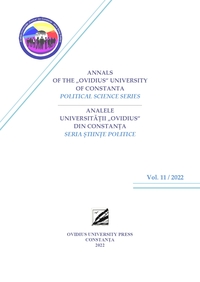ROMANIA AND THE CONCEPT OF MINILATERALISM. AN ANALYSIS OF THE COUNTRY’S REGIONAL COOPERATION STRATEGY (1990-2022)
ROMANIA AND THE CONCEPT OF MINILATERALISM. AN ANALYSIS OF THE COUNTRY’S REGIONAL COOPERATION STRATEGY (1990-2022)
Author(s): Octavian PopaSubject(s): Politics / Political Sciences, Political Sciences, Governance, International relations/trade, Security and defense, Geopolitics
Published by: Ovidius University Press
Keywords: Romania; minilateral format; multilateral; Bucharest Nine; geopolitics; NATO; Three Seas Initiative; Little Entente;
Summary/Abstract: The minilateral format is not an unknown concept in Romania’s geopolitical strategy. From regional initiatives based on the principle of interwar collective security to the Bucharest Nine format, Romania has participated but also initiated regional collaborations, especially regarding the security of the region. The present research aims to present the dynamics of Romania’s involvement in minilateral formats starting from the interwar periods and to analyze how these initiatives have contributed to the security and development of the Romanian state. The analytical approach will be correlated with the historical periods to which we refer, the analysis criteria being different depending on the regional geopolitical situation assessed such as Romania being part of the communist bloc compared to the current socio-economic and ideological configuration. The purpose of the research is to determine the usefulness and efficiency of the minilateral organizations in which Romania participated or which were initiated at the proposal of the Romanian side. It is also important to analyze how the minilateral endeavors influenced Romania’s membership in the European Union and NATO. Methodology-wise, the research uses document analysis to review both specialized sources belonging to the field of International Relations, but also historical ones. In the first part of the article, I will define the minilateral format, presenting the differences relative to a multilateral one. The second part is reserved for the analysis of the Little Entente, as an incipient minilateral commitment, with Romania as the initiator state, followed by the exemplification of the lack of minilateral commitments from the communist period. The third part contains the analysis of the post-Cold War period, and represents the main focus for the present research. The last part is the one dedicated to the conclusion of the analysed minilaterals from the perspective of Romania, containing added recommendations regarding the future of Romania’s external collaborations.
Journal: Annals of the Ovidius University of Constanta - Political Science Series
- Issue Year: 11/2022
- Issue No: 1
- Page Range: 129-153
- Page Count: 25
- Language: English

